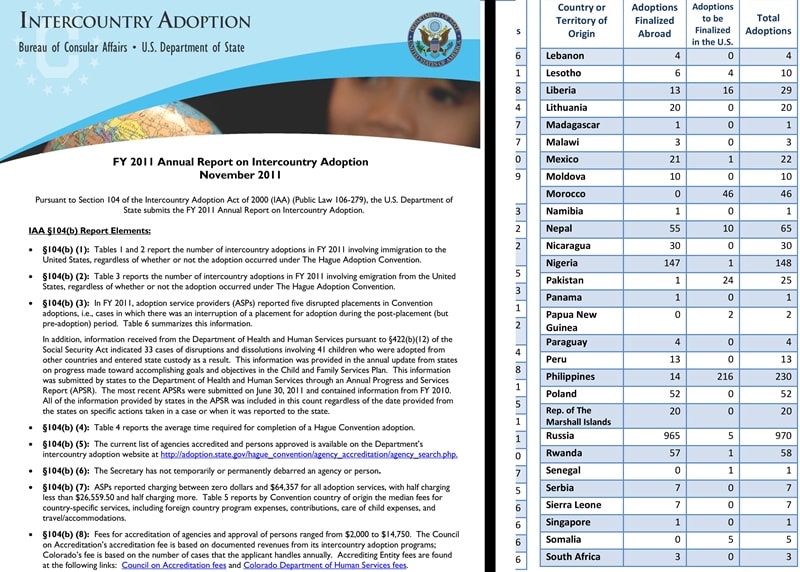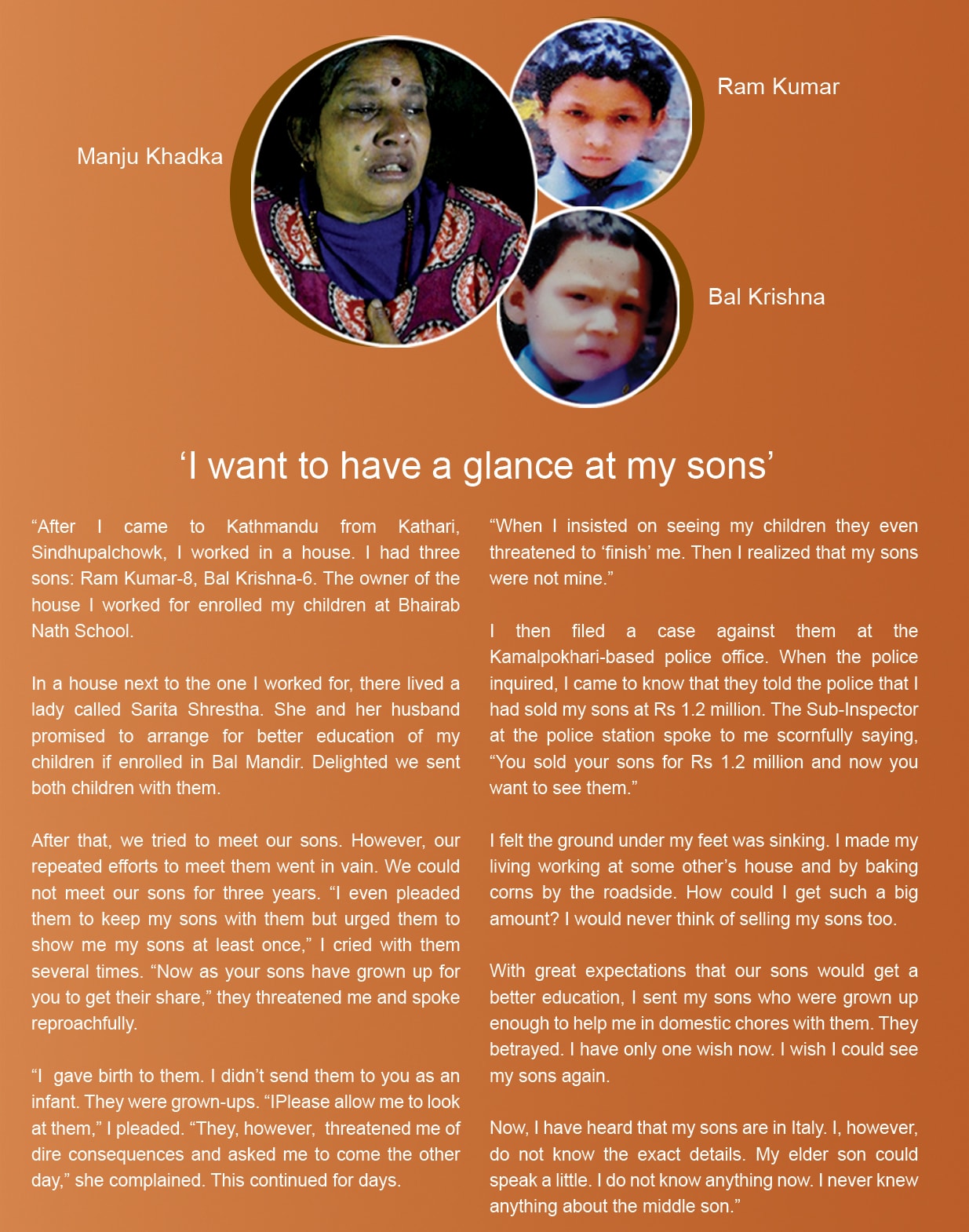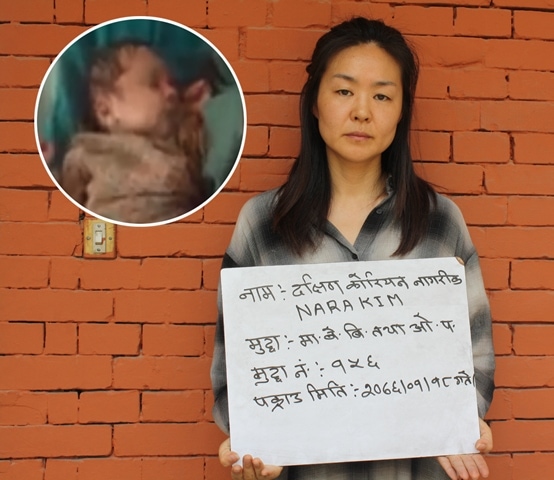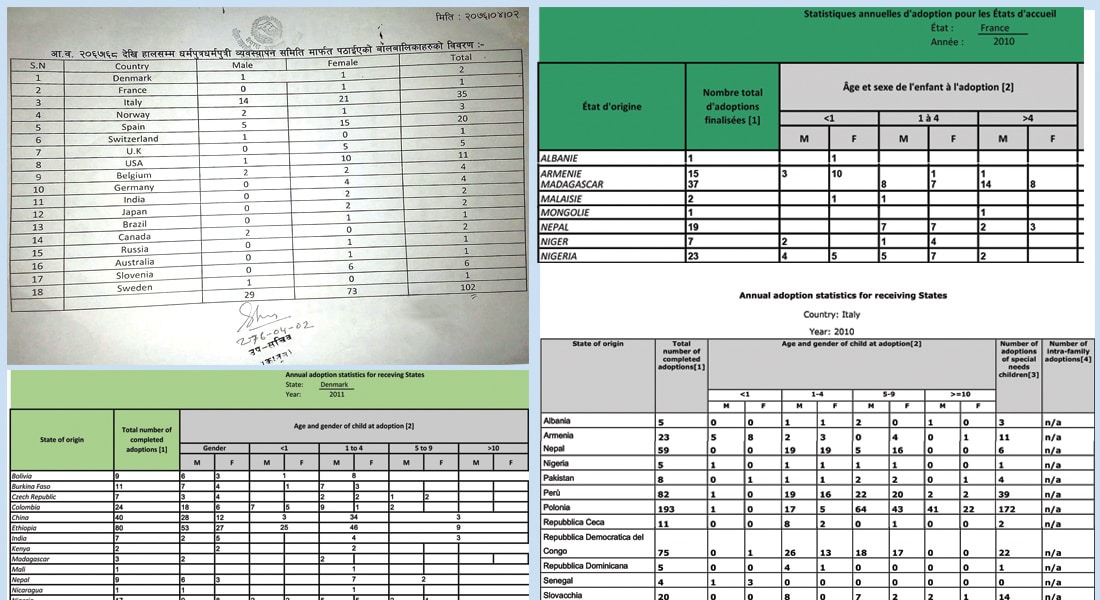A revelation of how a substantial number of Nepali children are trafficked to the United States and Europe in the name of adoption. A record at the US State Department and the Hague-based HCCH exposes several Nepali children who have been trafficked to several countries such as France, Italy, Norway, and Canada.
Akash Chhetri: Centre for Investigative Journalism-Nepal
If the record at the Ministry of Women, Children and Senior Citizens is to be taken into consideration, a total of 64 children from Nepal were adopted and sent to 10 different countries including the USA, Denmark, France, among others in the last nine years from 2010 to July 2019. Other countries in the record include Norway, Switzerland, Canada, Germany, Belgium, Italy and Sweden.

American State Department record shows more children have landed in America in comparison to official record of Nepalese government
However, a list submitted to the Netherlands-based intergovernmental agency the ‘Hague Conference on Private International Law’ (HCCH) by the US Department of State and the other nine countries reveals the number of children brought to their countries from Nepal is otherwise.
A record at the State Department and the HCCH webpage show that 242 Nepali children have been taken to different countries as ‘adopted children’ in the recent nine years.
Shockingly, when Nepal’s record shows only 64, there are 178 more children have reached to those countries. It deserves investigation as it’s supposed to be a Herculean task to take anyone as an adopted child from Nepal.
The ‘Terms and Conditions and Process” required for approving Adoption of a Nepali Child by an Alien-2008’ restricts the adoption of children by choice. Similarly, an alien willing to adopt a Nepali child should apply through a registered international agency or their embassy in Nepal. Provided they do not have their embassy in Nepal, they can apply through their diplomatic mission to look after Nepal filling designated forms offering details about the age, gender and other particulars of the prospective child to be adopted.
Based on the details in the application, a joint secretary-led ‘Family Matching Committee’ is assigned to find the prospective child. Clause 14 of the Terms and Conditions and Process required for granting approval for adoption of Nepali Child by an alien has the provisions related to the family matching committee. According to the Clause 14 (3) the Family Matching Committee, an alien can select based on first come first priority as per the details set out in the application pursuant to Section 8 and the details mentioned by the first family (applicant) and the child first registered in the Family Matching Committee.
HCCH’s webpage, however, shows scores of children have reached to foreign land skipping the legal process.
According to the Ministry Nepal government has permitted 18 countries to adopt children and take together with foreign nationals. However, HCCH has a record of only 9 countries and details from US Department of State were analyzed independently. Hence, this comparative study is confined in only 10 countries.
Details mismatch
Let’s compare the details provided by the Nepal government with the details provided by the concerned countries while submitting their annual child adoption report to HCCH.
Details submitted at the HCCH shows that Denmark took 20 Nepali children by adopting them from Nepal in the last nine years. But the record of concerned ministry in Nepal shows it has granted permission to only two children. It’s worth pondering how additional 18 children reached Denmark.

France has a somehow similar example. While the record at the Ministry show only 1 child taken as adopted in France, a French report submitted at the HCCH mentions that 21 children have reached there from Nepal after adoption. It’s a matter under wrap as how those 20 children reached France.
The details about the adopted children in the US are alarming. The State Department’s report reveals that 102 children are adopted from Nepal in the recent nine years. Nepal’s record, however, shows only 11 children were taken to the United States. It’s worth investigating how additional 91 children were taken to the USA as adopted children.
According to the provisions of Bureau of Consular Affairs of the US Department of State, which looks after such issues, a US citizen willing to adopt the child should be at least 25 years, in case of couple both husband and wife should consent to adopt the child; they should not have any criminal background, and the people willing to adopt a child should meet the criteria of the respective countries. The fact that 91 children happen to reach there as ‘adopted’ shows that no legal formalities are fulfilled while adopting children. As per details submitted to HCCH, Norway adopted 10 Nepali children since 2010. Nepal government’s record, however, shows only 3 children were taken to there fulfilling all legal obligations.
Reports submitted to HCCH show 3 children have been taken to Canada as adopted children. However, the Nepal government’s record shows only two children were taken there.
Details of other studied countries such as Switzerland, Belgium and Italy submitted to the HCCH reveal that they have three, twelve and fifty-nine children respectively taken as adopted children from Nepal. However, Nepal’s record shows the number to be one, four and thirty-five respectively.
Sweden has informed HCCH that it adopted eight children from Nepal whereas the Nepal government’s record shows that only a child was taken to Sweden.
Unlike other countries, Germany’s record is more than the record of the Nepal government. While Nepal’s record shows that four children have been taken to Germany as adopted children since 2011, Germany’s details submitted to HCCH show only two children were adopted.
“The data at the Ministry is our authentic data,” says Gyanendra Paudel, the spokesperson at the Ministry, “We have no idea how the details in other countries showed more numbers.”
Manju Khatiwada, a Deputy Director at National Human Rights Commission, says more children have reached to foreign land than details shows by the Nepal government due to trafficking. “The racketeers produce fake documents and influence both the government officials and parents as well to take the children abroad,” she says.Chapter 8 and Chapter 9 of the Civil Code 2017 have the provisions named ‘On Adoption’ and ‘On International Adoption’ respectively. The Civil Code 2017 is prepared in accordance with the UN Convention on the Rights of the Child.
National Policy on Children 2013, Standards of Operation and Management of Residential Child Care Homes 2012, Terms and Conditions and Process for Granting Approval for Adoption of Nepali Child by Alien, 2010, Inter-Country Child Adoption Development Board Formation Order 2011 are some of the laws and regulations to regulate child adoption in or from Nepal. All these provisions are to ensure that child adoption by aliens is regulated as per the prevalent laws.
Standards for Operation and Management of Residential Child Care Homes –2013 says that the state should look after the children who have lost both of their parents or the children of the invalid parents provided his/her kin fail to look after him/her. In the case of the orphan children also a priority of their care should be given to their family members and if the family members fail to look after them then their relatives, and if their close relatives also do not look after the state should look after them. In case of small children also, the first priority should be given to rear them at their families if the relatives also fail to keep them and bring them up then should go for the adoption within the country, and adoption by an aliens is to be regarded as the last resort to resolve the issue of rearing a child.
All these documents and their legal provisions make child adoption by aliens impossible without the notice of the government, however, documents submitted by many countries to HCCH reveal that a large number of children are trafficked abroad. These three instances show how children are being trafficked abroad as an adopted child.
Naresh became Chanorang Kim
Naresh was the youngest son of the Ghartis. Born in Rukum East, the family lived and worked in Pokhara. The wage the couple earned hardly supported their livelihood. They had three children.
 In 2018, while this family was still combating against poverty, Nara Kim (Passport No. 29819835), a South Korean tourist who had come to Pokhara met this family. She had been to Nepal many times.
In 2018, while this family was still combating against poverty, Nara Kim (Passport No. 29819835), a South Korean tourist who had come to Pokhara met this family. She had been to Nepal many times.
Kim and the Gharti family got closer. She came to Nepal again. She helped the family financially. She wanted to take the youngest son Naresh to Korea. Gharti couple agreed to send Naresh with Kim.
Then they started to bypass the law. According to the Central Investigation Bureau (CIB), a special investigation wing of the Nepal Police, Kim started producing a document that would show that Naresh was her son. She managed to get the certification of the relationship from the Pokhara Metropolitan City. The certificate mentioned that Kim and Naresh were mother and son. She made Naresh’s birth certificate from a hospital at Harichowk, Pokhara. The birth certificate mentioned Kim, a Korean woman, as a mother. With these certificates, she came to Kathmandu.
With those documents in hand, Kim went to the South Korean Embassy in Kathmandu. Once she submitted the documents, based on the evidence on the documents, the Korean Embassy provided Naresh a passport that mentioned Kim as his mother. The passport issued in Naresh’s name mentioned him as Chanorang Kim and his passport number was M 72504568.
All documents for Naresh’s travel to Korea were almost prepared. To complete the final task, Kim reached the Department of Immigration, Kalikasthan for Naresh’s visa. But the department was suspicious of the claim that Naresh was Kim’s son. The investigation started and an immigration team reached Pokhara to check the reality.
Upon reaching Pokhara, it was revealed that Naresh was not Kim’s son. The team found many mismatches between the date of birth of Naresh and Kim’s arrival date to Nepal. On May 1, 2019, when Kim was at the Tribhuvan International Airport, Kathmandu with her alleged son Naresh, she was arrested.
The police investigation revealed that Kim had lured Gharti couple to let her take their youngest son with her. The case is under consideration at the Kathmandu District Court. Kim has been sent to prison for further investigation.
Trafficking in a veil of protection
An NHRC report on Trafficking in Persons 2019, mentioned that there is a nexus between the orphanage, child-care centers and the foreigners willing to adopt the children. According to the report, there are 14,864 children in 533 children’s home. Nearly 80 percent of children in such centers have either one or both of their parents.
The only shelter for the orphan children constructed by the government side is Bal Mandir. This center run by Nepal Children’s Organization (NCO) provides care, nutrition and education to the orphans all over the country. Bal Mandir’s director leads and monitors its branches all over the country.

The documents revealing the differences in the record of Nepalese government’s Ministry of Women, Children and Senior Citizens with concerned country’s details whom have submitted to HCCH.
Unfortunately, the director expected to be the caregiver of all orphans are found involved in trafficking being tempted by the racketeers. Sadly, he is found to have acted a key role in the trafficking of newborns. The director of NCO is found to have been involved in making false documents to assist the trafficking of the children.
Director of Nepal Children’s Organization Bal Krishna Dangol is serving his time in Dillibazar Jail, in Kathmandu.
The story, which unmasked the hypocrites in protectors hide starts from Tribhuvan International Airport.
On August 14, 2019, Dona Smith (Passport No. 560793402), a British woman reached TIA on her way back home. She had a newborn with her. Her documents established that the child was her own.
The birth certificate provided by the Mahalaxmi Metropolitan City of Lalitpur mentioned the child as Smith’s. According to the document, the child’s name was Anna Bella Laxmi Shrestha Smith and she was born on July 28, 2019.
The hair of the child and Smith’s was different. Dubious of her intent, the immigrant staff cross-questioned Smith for a few minutes.
She claimed that she had given birth to that child at Ram Prasad Shrestha’s home in Mahalaxmi Metropolitan City. Smith added that she had been to a hospital in the capital where she had got the baby’s health check-up. She even mentioned Ram Prasad Shrestha as the child’s father.
British Embassy in Kathmandu also provided a passport in the name of the newborn as Smith’s child. The child was provided a passport with the number 792159314. Mahalaxmi Metropolitan City-6 provided the child’s birth registration certificate.
The Immigration Department arranged for the health check-up of Smith which revealed that Smith was not the mother of the child. Later it was found the mother of the child was one of the rape victims who had given birth to her child at Thapathali based Paropakar Maternity Hospital. According to DSP Hobindra Bogati, a DSP involved in the investigation, the Director of Bal Mandir was also found working as a part of a child racketeering gang.
In her statement given to the police, Smith stated that she had given Dangol Rs 450 thousand to get the newborn for her. It is found that Smith had spent more than Rs 2 million to get the child.
DSP Bogati said that she had spent that amount to give Dangol, the Director of Bal Mandir and other people who could help her in preparing necessary documents for the procurement of the child. On September 15, 2019, Kathmandu District Court ordered to continue investigation keeping Smith and Dangol in prison.
In Italy in the fake document

The number of approvals for adoption given by the authorities in Nepal since 2010 so far (Source: Ministry of Women, Children and Senior Citizens, Singha Durbar), and the latest number of Nepali children in different 10 countries of the world (Source: The US State Department and Inter-Governmental Body “Hague Conference on Private International Law – HCCH)
Some 10 years back, a Khadka couple used to make their living by baking corns. They had two sons — Ram Kumar and Bal Krishna. They were told that if they sent their children to children’s homes, they would get free education. Lured by offer, the couple who was struggling for their livelihood sent their sons, aged eight and six, to the children home.
The children’s shelter did not let the Khadka couple meet their sons for a long time. Worried about children, the couple filed a case against the shelter at the National Human Rights Commission (NHRC). Upon investigation, the NHRC found out that their children had already reached Italy by producing fake documents, said Khatiwwada.
It was revealed that the children had been taken to Italy in the form of adopted children. “The children taken to the children’s home were sent to Italy by the home regarded as shelter,” Khatiwada says, “It’s found that most of the documents, though fake, were drafted and designed perfectly.”
Later, NHRC decided drew government’s attention to such issues. The NHRC decision says, “As National Children Organization, Naxal was found involved in forging documents that would establish the children as adopted children; it seems the prevalent provisions on child adoption need revision as the parents also have failed to fulfill their duties of protecting their children; recommend policy revision of NOC to the government.” It also suggested an awareness campaign in the direction.
Says Manju Khadka, the mother of the missing children, “I want to have a glance at my sons.”
No complaints, no search
According to the police statistics, more than 1,000 children have become the victims of trafficking in the last 5 years. According to DSP Raj Kumar Silwal, the racketeers manage to send the children by tempting the guardians to make room for sending the children to a foreign land.
“The children who are trafficked are often from the poor and underprivileged community or the street children,” DSP Silwal says, “Racketeers prefer such children because it’s easy to tempt their parents.” Besides, none complaints on behalf of such children and the police also do not search them citing no complaints have been made in that regard.
Mohna Ansari, one of the commissioners at NHRC thinks it difficult to curb such issues unless awareness is made mandatory. “In the poverty-ridden society where there are illiteracy and scarcity everywhere, the parents want to see their children well-educated,” Ansari says.
She adds, “When the parents feel they cannot arrange for good education of their children, they get tempted easily and send their children with strangers; otherwise, no parents think of parting with their children.”



